Blog
Ponytail Palm Indoor
Ponytail Palm Indoor

Ponytail palm indoor is a plant belonging to the South American continent, best known for its thick and beautiful leaves. If you live in countries like the United States and the climate of your place of residence is similar to warm regions, you can reasonably use this plant in your place of residence. Ponytail palm flowers can be easily stored in the apartment, and if placed in a suitable environment, their stems can grow and maintain up to 3 meters. This plant belongs to the agave family, and, interestingly, some Native Americans know it as the horsetail palm. This name is related to its thick onion root, which resembles an elephant’s foot. In this article, we want to make you more familiar with the storage conditions of the ponytail palm plant in the apartment. Please read on with Elo Planet.
| Botanical Name | Beaucarnea recurvata |
| Common Name | ponytail palm indoors |
| Plant Type | Succulent |
| Pet / Baby Safe | not toxic to pet and baby |
| Sun Exposure | bright indirect light to full sun |
| Hardiness Zones | 8 to 11 |
| Bloom Time | early spring to fall |
| Soil Type | Sandy, well-draining soil |
| Soil Amendments | text here |
| Types of Fertilizer | text here |
| Flower Color | Male flowers are cream-colored; the female’s pink |
| Foliage Color | Male: cream; female: pink / green |
| Plant Height | 12 to 36 inches 36 to 96 inches 96 to 240 inches |
| Native Area | southeastern Mexico, Belize and Guatemala |
Introducing the ponytail palm indoor houseplant
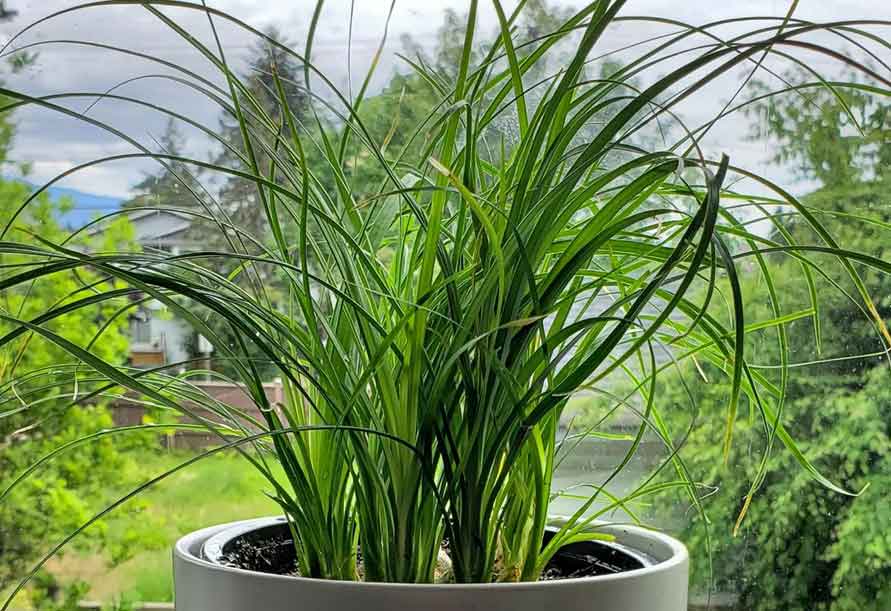
ponytail palm indoors, scientifically known as beaucarnea recurvata. This plant has narrow and elongated leaves, and the shape of its leaves and long stems have given a special effect to this species. Those who like to use this plant at work or at home should note that the ponytail palm plant requires a lot of light, and it is better to avoid placing it in low-light environments.
The temperature required to maintain the ponytail palm indoor plant
As mentioned, the ponytail palm houseplant is suitable for tropical logic, and the range of 17 to 22 ° C will be the best temperature for this plant’s proper and ideal growth. It is recommended to place the plant pot at a distance from the window in the cold winter season so that its leaves do not wither.
Irrigation conditions of ponytail palm indoor

Usually, the amount of watering the ponytail palm depends on your area’s climate; if you live in a warm area once a week, if your area has a mild climate, watering once every two weeks will suffice. Interestingly, the ponytail palm plant has a large amount of water due to its fleshy and swollen stem. It is better to irrigate your plant whenever the surface is arid.
Suitable light for keeping ponytail palm indoor plant
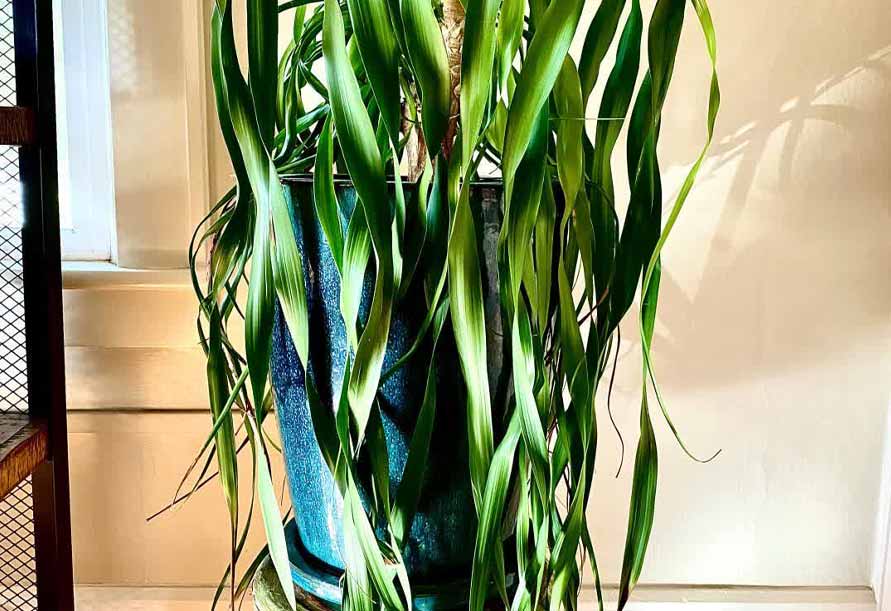
It is better to place the pot of this plant in a place that shines in direct sunlight. But on hot days of the year, try not to be exposed to direct sunlight for more than 6 hours, and if you keep this plant in the apartment, try to place it on the balcony terrace or skylights. Also, if your house does not have enough light needed for this plant, you can use artificial lights. In summer, at noon, the sun shines directly on the leaves of this plant, which causes the leaves of the ponytail palm to burn and burn brown spots on It is created.
Soil suitable for keeping ponytail palm indoor plant

In general, it can be said that the ponytail palm plant needs a mixture of light sand with drained soil for proper growth because drained soil prevents the accumulation of water in the soiled tissue and suffocation and root rot. The best composition for ponytail palm soil is 50% coarse sand of freshwater rivers, 20% coco peat, 20% decayed forest leaf soil, and some perlite. Of course, ready-mixed and packed soils can also be prepared. Peat moss and hummus or soil plant are usually added to this soil type.
The best way to fertilize ponytail palm indoor
The best nutrient for ponytail palm is iron fertilizer. It is recommended to use iron fertilizer once a month and complete fertilizer (which is sold in the form of packaging in florists) for this plant.
Ponytail palm indoor pot replacement time
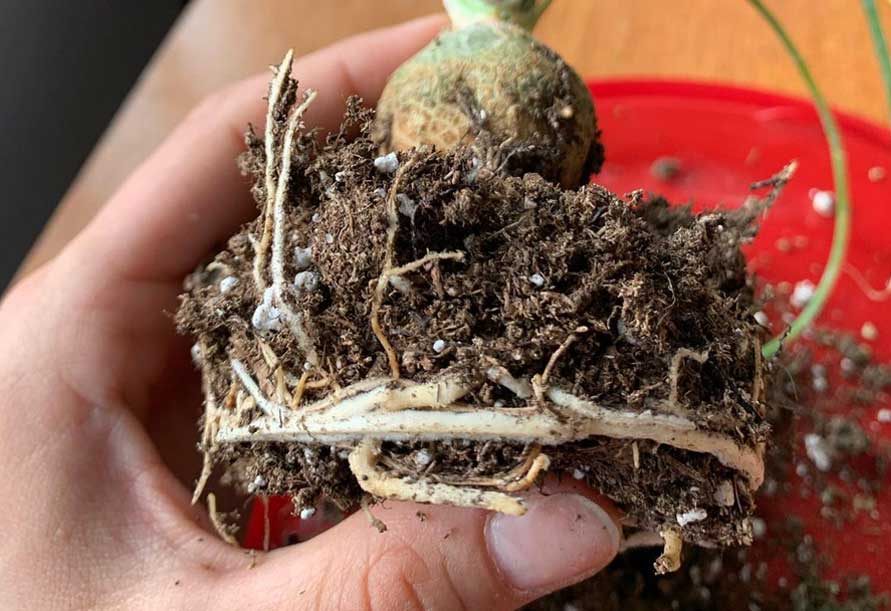
Replacing a ponytail palm pot is not just about beautifying and providing more space for the plant’s roots; Instead, we replace old, nutrient-poor soils with new, nutritious ones. It is necessary to replace the plant pot with fresh soil every 2 or 3 years. The best time to change pots is early spring. Before planting the plant in a new pot, make sure that there is a water drain hole in the bottom of the pot.
How to plant and propagate ponytail palm indoor
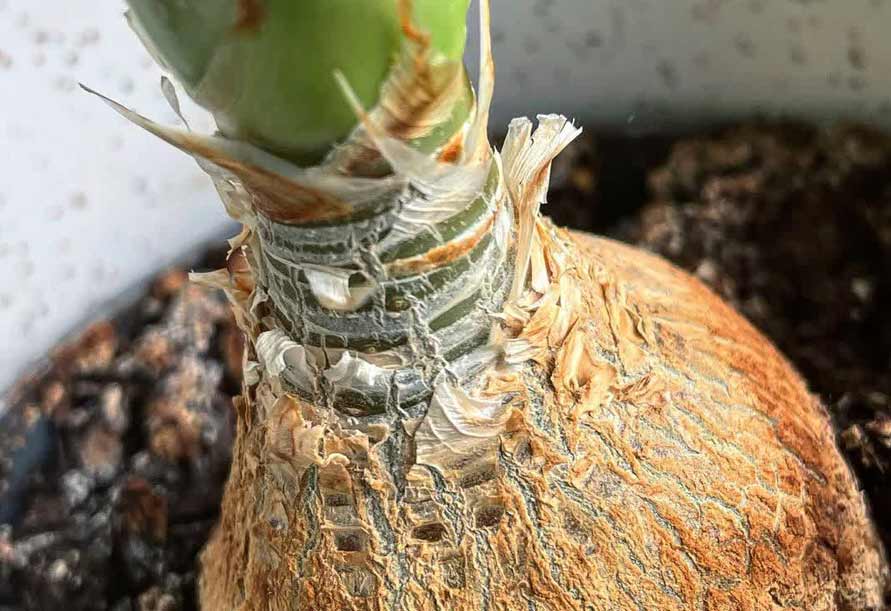
1) Propagation by welding trunk
Sometimes on the stem and especially at the end of the swollen area of the flower, tiny seedlings grow, which are called boiling stems. After a while, the end of the seedling at the connection to the base swells.
You can separate the seedlings with a sharp cutter, disinfect them, put the end of the cuttings in the rooting hormone, and plant them in a separate pot so that 30% of the seedlings are in the soil.
2) Propagation by boiling feet from the side of the plant
Separating the cuttings from the plant is one of the methods of propagating ponytail palm. Sometimes, two or more plants grow densely in a pot, which can be separated when the plant pot is changed in the spring. It should be noted that before separating the debris, provide the necessary equipment such as pots, pebbles for drainage, and suitable soil.
The most common diseases of the plant ponytail palm indoor
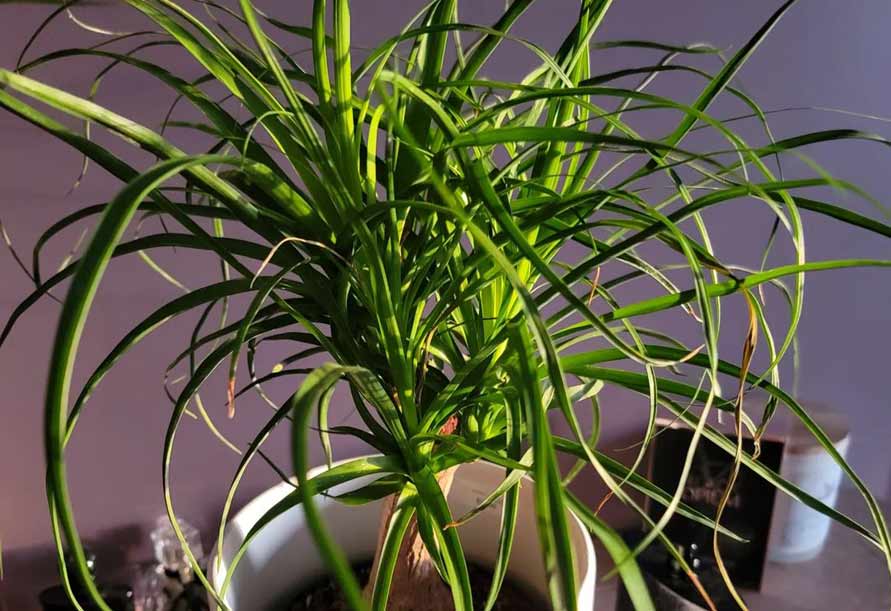
Yellowing and brittleness of ponytail palm leaves
This problem is usually caused by excessive irrigation and heavy potting soil. It is good to know that lack of proper soil drainage is one of the leading causes of frequent yellowing of ponytail palm leaves. The soil suitable for planting ponytail palm is light, nutritious, and highly drained.
Shrinkage and wilting of ponytail palm leaves
Excessive watering and loss of root contact with the plant (due to root rot) are the leading causes of wilting and shrinkage of ponytail palm leaves.
Wrinkles on the trunk and stem of the ponytail palm
The cause of this complication is irregular irrigation. Excessive irrigation causes the box of the plant to be crushed and wrinkled, and low irrigation causes this to happen to the plant. In this regard, the use of suitable soil composition helps a lot to withstand the water fluctuations of the plant.
Conclusion
The ponytail palm is native to the southern Americas and is not considered a poisonous plant for pets or infants. You can breed and propagate them by knowing their maintenance systems, such as suitable ambient temperature, soil conditions, and suitable distances for irrigation. In this article, we wanted to give you a piece of reasonably comprehensive information on how to maintain a ponytail palm. If you have any questions or concerns about this issue, please contact us in the comments section.
RELATED POSTS













